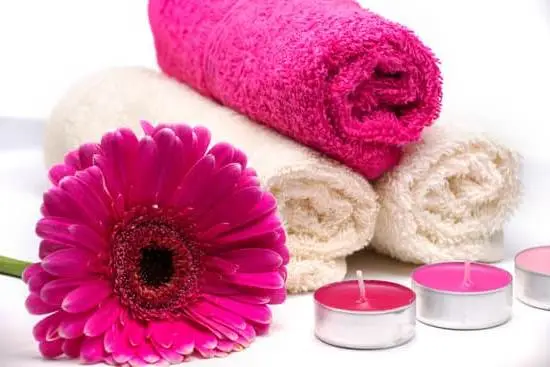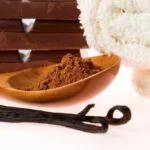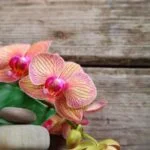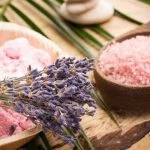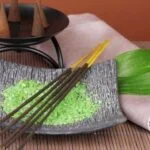Are you looking for a natural way to improve the air quality in your home while also reaping the benefits of aromatherapy? In this article, we will explore how to use your humidifier for aromatherapy and the many advantages it can bring to your overall well-being. By incorporating essential oils into your humidifier, you can create a soothing and therapeutic atmosphere that promotes relaxation, rejuvenation, and a healthier living environment.
Aromatherapy has been used for centuries as a holistic healing practice, harnessing the natural power of essential oils to promote physical and mental well-being. When paired with a humidifier, the benefits of aromatherapy are enhanced.
The gentle mist produced by a humidifier not only disperses the aroma of essential oils throughout the room but also adds moisture to the air, helping to combat dryness and improve respiratory health. This combination creates an ideal environment for experiencing the full therapeutic effects of aromatherapy.
Throughout this article, we will provide you with valuable information on understanding aromatherapy, choosing the right essential oils for your needs, preparing your humidifier for aromatherapy use, incorporating aromatherapy into your daily routine, safety precautions when using essential oils in a humidifier, cleaning and maintenance tips, troubleshooting common issues, and more.
Whether you are new to aromatherapy or seeking to enhance your existing practice, learning how to use your humidifier for aromatherapy is an excellent way to elevate the atmosphere in your home and promote a healthier lifestyle.
Understanding Aromatherapy
Aromatherapy has been used for centuries as a natural way to improve overall well-being, reduce stress, and promote relaxation. The practice involves using essential oils derived from plants to enhance physical and mental health. When combined with a humidifier, aromatherapy can be even more effective in creating a calming and pleasant environment.
The use of essential oils in aromatherapy can have various benefits, such as reducing anxiety, improving sleep quality, easing headaches, and boosting mood. Different essential oils have different properties and can be used for specific purposes. For example, lavender oil is known for its calming effects and is often used to promote relaxation and better sleep, while peppermint oil is invigorating and can help increase focus and mental clarity.
To use your humidifier for aromatherapy, start by choosing the right essential oil based on the desired effect. Once you have selected the oil, add a few drops to the water tank of your humidifier before turning it on. As the humidifier disperses moisture into the air, it will also release the aroma of the essential oil, providing all the benefits of aromatherapy throughout your home or workspace.
Incorporating aromatherapy into your daily routine can be as simple as using your humidifier with essential oils while you work or relax at home. By understanding the basics of aromatherapy and selecting the right oils for your needs, you can easily enhance your well-being through this natural and enjoyable practice.
| Benefits of Aromatherapy | Examples of Essential Oils |
|---|---|
| Reduces anxiety | Lavender |
| Improves sleep quality | Chamomile |
| Eases headaches | Peppermint |
Choosing the Right Essential Oils
Aromatherapy involves using essential oils to promote physical and emotional well-being. Each essential oil has its own unique properties and benefits, making it important to choose the right oils for your needs. Whether you’re looking to unwind after a long day or boost your energy levels, there’s an essential oil for every occasion. Here’s how to select the best oils for your aromatherapy routine.
Understanding Different Essential Oils
It’s important to understand the different types of essential oils available and their therapeutic properties. For example, lavender essential oil is known for its calming and relaxing effects, while eucalyptus essential oil is often used for its respiratory benefits. Citrus oils like lemon and orange are popular choices for boosting mood and energy levels. By familiarizing yourself with the various oils, you can choose the ones that best align with your aromatherapy goals.
Picking Oils Based on Your Needs
When selecting essential oils for aromatherapy, consider what specific benefits you’re looking to achieve. If you struggle with anxiety or stress, you may want to opt for soothing oils such as chamomile or sandalwood. On the other hand, if you’re seeking an invigorating scent to enhance focus and concentration, peppermint or rosemary may be more suitable options. Understanding your individual needs will help you choose the right essential oils for your aromatherapy practice.
Exploring Blends and Combinations
In addition to individual essential oils, exploring blends and combinations can further enhance the therapeutic effects of aromatherapy. Many companies offer pre-made blends tailored to specific purposes such as relaxation, immune support, or mental clarity. Alternatively, you can create your own custom blends by combining multiple essential oils based on their complementary properties. Experimenting with different combinations can add variety and versatility to your aromatherapy routine.
Preparing Your Humidifier
Using your humidifier for aromatherapy can greatly enhance the benefits of both the essential oils and the humidifier itself. By properly preparing your humidifier for aromatherapy use, you can create a soothing and therapeutic environment in your home. Below are step-by-step instructions on how to prepare your humidifier for aromatherapy use:
1. Clean Your Humidifier: Before adding any essential oils, it is important to ensure that your humidifier is clean and free from any residue. This will prevent any impurities from mixing with the essential oils and being released into the air. Follow the manufacturer’s instructions for cleaning your specific type of humidifier.
2. Fill the Tank with Water: Once your humidifier is clean, fill the tank with clean, distilled water. Avoid using tap water as it may contain minerals or impurities that can affect the performance of your humidifier.
3. Add Essential Oils: After filling the tank with water, add a few drops of your chosen essential oil directly into the water. Be sure to refer to the manufacturer’s recommendation for the amount of essential oil to use based on the size of your humidifier.
4. Mix Well: Gently swirl or stir the water in the tank to ensure that the essential oil blends evenly with the water. This will help distribute the aroma evenly as it is dispersed into your living space.
By following these simple steps, you can easily prepare your humidifier for aromatherapy use and enjoy all of its therapeutic benefits throughout your day.
Incorporating Aromatherapy Into Your Daily Routine
Aromatherapy can be a powerful tool for improving overall well-being, and using a humidifier to disperse essential oils throughout your space can enhance the benefits of aromatherapy. Here are some ways you can incorporate aromatherapy into your daily routine using your humidifier:
1. Morning Wake-Up: Start your day with a refreshing blend of essential oils in your humidifier. Try combining citrus oils like lemon or grapefruit with peppermint for an invigorating and energizing aroma to help wake up your senses.
2. Work or Study Time: When you need to focus and concentrate, adding essential oils like rosemary, eucalyptus, or basil to your humidifier can promote mental clarity and alertness. This is especially helpful during long work or study sessions.
3. Evening Relaxation: Wind down in the evening by using calming essential oils in your humidifier. Lavender, chamomile, and cedarwood are popular choices that can help promote relaxation and prepare you for restful sleep.
These are just a few examples of how you can use your humidifier for aromatherapy throughout the day, but the possibilities are endless. Experiment with different essential oil blends to find what works best for you and enjoy the therapeutic benefits of aromatherapy in every moment of your day.
Remember that when using your humidifier for aromatherapy it’s important to clean it regularly to prevent any build-up of essential oils or mold. By following these tips on how to use your humidifier for aromatherapy throughout the day, you can create a more pleasant environment while reaping all the benefits of essential oils.
Safety Precautions
Using essential oils in a humidifier for aromatherapy can provide numerous benefits, but it’s important to prioritize safety when doing so. Essential oils are highly concentrated and potent, and improper use can lead to adverse reactions or damage to the humidifier. By following some safety precautions, you can enjoy the therapeutic properties of essential oils without any risks.
First and foremost, it’s crucial to thoroughly read the instruction manual of your humidifier before incorporating essential oils. Not all humidifiers are designed for use with essential oils, and doing so in an incompatible device can result in damage or malfunction. Additionally, using essential oils in a humidifier not intended for that purpose may void its warranty.
When adding essential oils to your humidifier, always dilute them with water according to the manufacturer’s recommendations. Most manufacturers advise using only a few drops of essential oil per tank of water. Failure to dilute the essential oils properly can lead to respiratory irritation and other health issues. Additionally, avoid adding undiluted essential oils directly onto the filter or any plastic components of the humidifier.
To further ensure safety when using your humidifier for aromatherapy, choose high-quality essential oils from reputable sources. Poor quality or synthetic essential oils may contain impurities that can cause allergic reactions or other adverse effects. It’s also important to store essential oils properly, away from direct sunlight and extreme temperatures, to maintain their integrity and potency.
| Humidifier Safety Precautions | Importance |
|---|---|
| Read the instruction manual | To avoid damaging the humidifier |
| Dilute essential oils properly | To prevent respiratory irritation |
| Choose high-quality essential oils | To avoid adverse reactions |
Cleaning and Maintenance
Using a humidifier for aromatherapy can provide numerous benefits for overall well-being and create a calming atmosphere in your home. However, it is important to properly clean and maintain your humidifier to ensure that it continues to disperse essential oils effectively. In this section, we will discuss some tips on how to properly clean and maintain your humidifier for optimal aromatherapy benefits.
Regular Cleaning
To prevent the buildup of mold, bacteria, and mineral deposits in your humidifier, it is essential to clean it regularly. Begin by unplugging the unit and emptying any remaining water. Disassemble the humidifier according to the manufacturer’s instructions and carefully clean all parts with mild soap and water. Use a soft brush or cloth to gently scrub any hard-to-reach areas, and allow all parts to air dry before reassembling.
Use Distilled Water
Using distilled water instead of tap water can help minimize mineral buildup in your humidifier, extending its lifespan and ensuring that it functions efficiently. The minerals present in tap water can leave deposits on the inside of the unit over time, affecting its ability to disperse essential oils evenly.
Replace Filters Regularly
If your humidifier has a filter, it is important to replace it regularly as recommended by the manufacturer. A clogged or dirty filter can hinder the performance of your humidifier and affect the quality of the aromatherapy experience. Be sure to follow the specific guidelines for replacing filters provided by the manufacturer to maintain optimal performance.
By following these cleaning and maintenance tips, you can ensure that your humidifier continues to provide optimal aromatherapy benefits. Taking care of your unit will not only extend its lifespan but also contribute to a more effective and enjoyable aromatherapy experience in your home.
Troubleshooting
When using a humidifier for aromatherapy, it’s important to be aware of common issues that may arise and how to troubleshoot them effectively. One issue that many users encounter is the diffuser not emitting enough aroma, which can be frustrating when trying to reap the benefits of essential oils.
If you find that your humidifier is not dispersing enough scent, try adding a few more drops of essential oil to the water reservoir. Additionally, placing the humidifier in a smaller room or closer to where you are sitting can help improve the distribution of the aroma.
Another common problem with using a humidifier for aromatherapy is mold or mildew buildup within the device. To prevent this issue, it’s crucial to clean your humidifier regularly and thoroughly. Use a mixture of white vinegar and water to disinfect the unit, ensuring that all crevices and components are properly cleaned. Additionally, allowing the humidifier to dry completely before using it again can help prevent mold growth.
Some users may also experience technical malfunctions with their humidifiers when used for aromatherapy. If you notice that your device is leaking or making unusual noises, it may be time for maintenance or repairs. Refer to the manufacturer’s instructions for troubleshooting specific technical issues, as well as contacting customer support if necessary. A well-maintained and properly functioning humidifier is key to enjoying the benefits of aromatherapy at its fullest potential.
Understanding common problems and their solutions when using your humidifier for aromatherapy can enhance your overall experience with essential oils and promote a healthier environment in your home or workspace. By addressing these issues proactively and maintaining your device regularly, you can optimize the use of your humidifier for aromatherapy while ensuring safe and effective diffusion of essential oils throughout your space.
Conclusion
In conclusion, using a humidifier for aromatherapy has numerous benefits for improving overall well-being. Aromatherapy can enhance relaxation, promote better sleep, alleviate stress, and even provide relief from respiratory issues. By choosing the right essential oils and properly preparing your humidifier, you can create a soothing and therapeutic environment in your home or office.
It is important to understand the basics of aromatherapy and the therapeutic properties of different essential oils when incorporating them into your daily routine. Whether it’s through diffusion, steam inhalation, or simply adding a few drops of oil to your humidifier, there are various ways to enjoy the benefits of aromatherapy throughout the day.
Additionally, it is crucial to prioritize safety precautions when using essential oils in a humidifier. Diluting essential oils and regularly cleaning and maintaining your humidifier will ensure optimal aromatherapy benefits while minimizing any potential risks. Overall, with proper knowledge and care, anyone can easily learn how to use their humidifier for aromatherapy and begin experiencing its positive effects on both physical and mental well-being.
Frequently Asked Questions
Is It Safe to Put Essential Oils in a Humidifier?
It is generally not recommended to put essential oils in a humidifier, as it can damage the machine and pose a risk of respiratory issues. Instead, use a diffuser specifically designed for essential oils to ensure safety.
How Do You Use a Humidifier for Fragrance?
To use a humidifier for fragrance, you can add a few drops of essential oils or fragrance oils directly into the water tank. Be sure to clean the humidifier regularly to prevent any residue buildup from affecting its performance.
What Can I Put in My Humidifier to Help Me Breathe?
Adding saline solution or distilled water with a few drops of eucalyptus or peppermint essential oil can help relieve congestion and make it easier to breathe when using a humidifier. Avoid using tap water or any additives that could potentially harm the machine or your health.

Are you looking for a natural way to improve your health and wellbeing?
If so, aromatherapy may be the answer for you.

